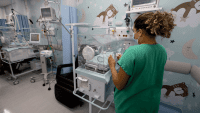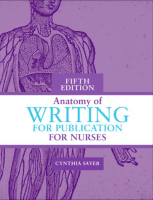From our Editor-in-Chief
We all have preferences when it comes to how we communicate, get information, and stay connected to friends, family, professional colleagues, and current events within and outside nursing. Options for expanding our digital horizons are constantly expanding, and American Nurse Today is expanding, too. If you’re reading this article, chances are you’re already hooked on using electronic devices to stay up to date.
With this first ONLINE edition of our journal, we bring you more content and easy access to the type of information and breaking news you’ve grown accustomed to receiving through the print journal. Our ONLINE edition not only provides fresh content but brings you new ways to connect with colleagues, express yourself (through polls and blogs), and stay abreast of healthcare news and information. Some of this information comes from our RSS feed; the little orange square with white lines resembling sound waves is the universal icon for web feeds). A web feed is a tool that allows sites to deliver content to your desktop as soon as it’s published or updated. Once you choose a specific feed reader, you’re can start reading from that feed, which brings all your personal selections together in one location. Make sure to sign up for the feed by visiting http://feeds.feedburner.com/AmericanNurseToday_WebExclusives.
Have you been following us on Twitter? (AmerNurse2day). As you probably know, Twitter is one of the many social networking sites where people can engage (or disengage) in quick conversations or find out what others are doing moment by moment.
Speaking of moment-by-moment networking, many of us are inundated by incoming messages and information—to the point where we feel the need to limit how much news and trivia we allow into our lives. Don’t get me wrong: I like my gadgets as much as the next person. But I have a love-hate relationship with 24/7 connectivity.
Even so, I realize it’s the connectedness that defines our lifestyles, personally and professionally, across generations and continents. Recently, I was surprised to learn that almost three-quarters of adults read blogs and “tweets” and watch user-generated web video. More than half maintain a profile on a social networking site, and a quarter to one-third post or upload video to their own personally created blogs or post weekly to a social networking site. From these statistics, we can extrapolate that many of our patients also visit networking sites frequently and use the same media to communicate electronically.
Professional networking takes its lessons from the social networking genre, with blurring of the lines between always being “on” to being “on top of things.” Many healthcare professionals use “webinars” and “podcasts” to conduct virtual meetings and attend conference sessions. In fact, social media have become a key means of sharing business information.
Many healthcare organizations use popular networking sites to expand their marketing and deliver outreach video content and educational materials across the globe. Patients want to be connected to their providers and like to relate their experiences of coping with illness or finding answers to health questions.
So how do we stay in touch, informed, and in control at the same time? Younger nurses grew up with instant connections, enabling them to converse with others, share photos, and tell stories electronically. Many enjoy using the latest mobile technology to manage nearly every aspect of their lives.
For myself and other older nurses, the biggest breakthroughs we experienced in “instant” anything were instant Polaroid pictures and instant breakfast! But today, computers are in three-quarters of U.S. households and, most likely, a high percentage of nurses have more than one computer to satisfy the needs of household members.
What’s more, handheld electronic devices are poised to overtake the traditional computer in keeping us connected. Every day, these same devices are finding new and enhanced uses in healthcare environments as well as in personal health management.
The pace of communication (and seemingly everything else) continues to increase. We want information when we want it, in the form we want it, and in the most convenient way.
So, readers—start your browsers, flip your phones, and link into American Nurse Today. No matter how you like your information, we’ve got you covered.
Pamela Cipriano, PhD, RN, FAAN, NEA-BC
Editor-in-Chief


















3 Comments.
OK, so I’m a dinosaur, but I really, really love to be able to sit and scan my print journals with my feet up and a glass of wine at my side. Keep us type B personalities in mind when you are changing to the newest and fastest. Thanks!
Did I miss it? Will there be a way to opt-out of getting the paper version? The journal is very important to me as a reference, but they pile up. I have a huge hard drive storage. I would prefer to receive it electronically.
Hi Pam,
You’ve always been “ahead of the crowd.” Thank you for continuing to do so.
Best – Cathryne Welch